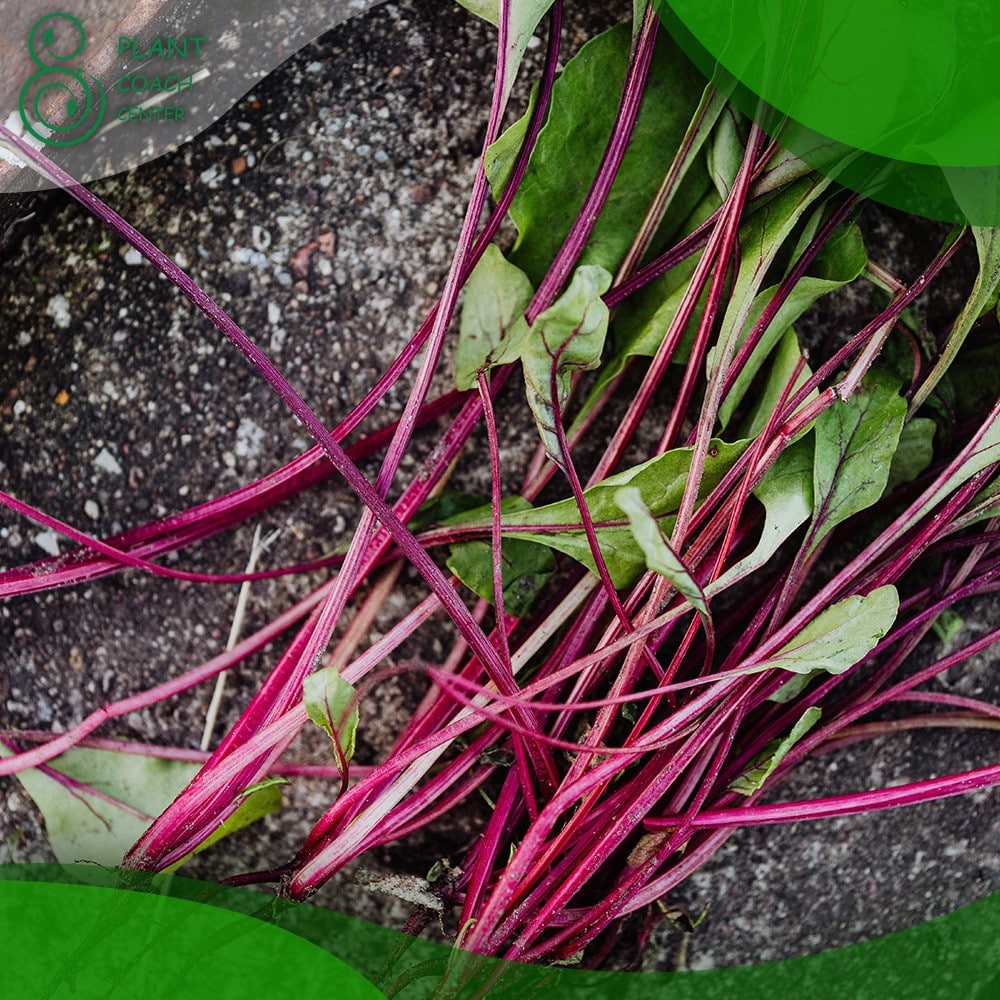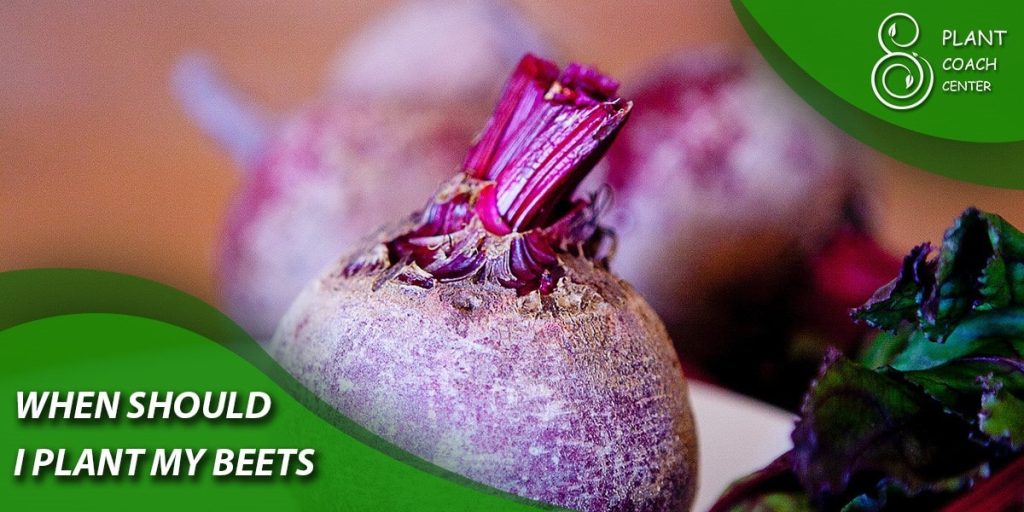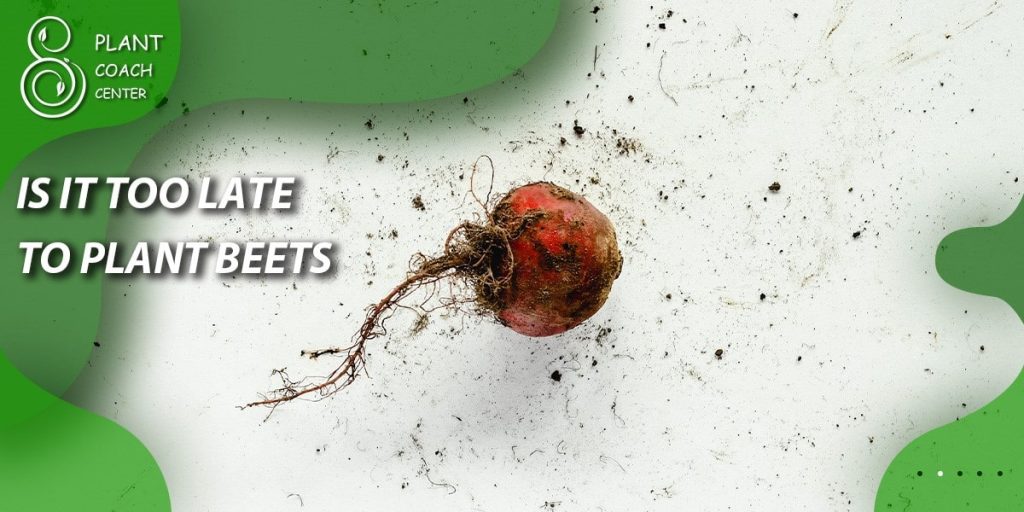When Do You Plant Beets?
Welcome to the vibrant world of beet cultivation! Whether you’re an avid gardener seeking a new culinary adventure or a beginner eager to explore the joys of growing your own produce, understanding the optimal timing for planting beets is a crucial first step. As the earth cycles through its seasons, the opportune moments to sow beet seeds vary, promising diverse harvests and flavors.
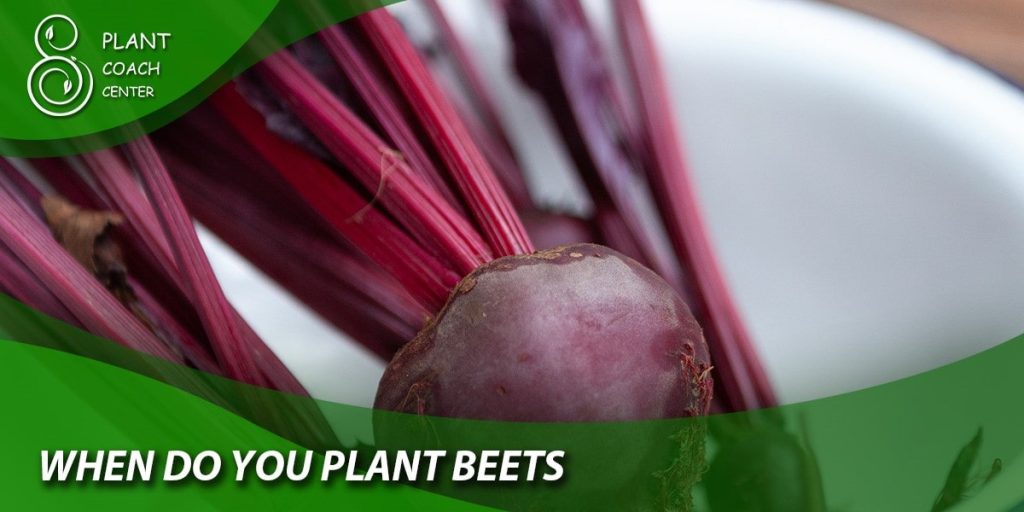
In this article, we delve into the art and science of beet planting, unraveling the mystery behind the question, “When do you plant beets?” From deciphering the dance between different climatic conditions and their effects on growth to uncovering the secrets of soil preparation, we embark on a journey that unveils the intricacies of cultivating these colorful and nutritious root vegetables.
Join us as we navigate the tapestry of seasons, providing insights into the best times for sowing seeds, methods for mitigating frost’s touch, and even venturing indoors for an early start. Whether you’re cultivating a window-box garden or tending to a sprawling backyard, our exploration will equip you with the knowledge to orchestrate a successful beet-planting symphony.
Seasonal Symphony: Choosing the Perfect Time to Plant Beets
The rhythmic pulse of nature’s seasons orchestrates a dynamic dance for gardeners, determining the ideal moment to sow beet seeds and reap a bountiful harvest. Understanding the nuances of each season can empower you to make informed decisions, whether you’re aiming for tender baby beets or robust, mature roots.
Spring Splendor: Seizing the Early Opportunities
Spring breathes life back into the land, coaxing dormant plants to awaken and thrive once more. As the last frost bids farewell, it’s time to prepare your beet beds. Early spring planting offers several benefits. The cooler temperatures promote steady germination and robust growth, while the reduced pest pressure can lead to healthier plants. For those eager to enjoy baby beets, early spring planting is the key – you’ll be relishing their tender flavors in just a few short weeks.
Summer Sensations: Balancing Heat and Growth
As the sun reaches its zenith, summer’s warmth can either be a boon or a challenge for beet cultivation. Sowing beets in early to mid-summer can be strategic, especially in regions with mild summers or cooler microclimates. By the time fall arrives, you’ll be reaping the rewards of your efforts. To mitigate the intense heat of peak summer, consider partial shading or regular watering to maintain soil moisture, ensuring your beets remain juicy and full-flavored.
Fall’s Finale: Extending the Season
Autumn’s arrival doesn’t signify the end of beet planting – in fact, it offers a second chance for those who missed the earlier windows. Late summer and early fall are opportune moments to sow beets once again. The waning heat allows for comfortable working conditions, and the cool evenings encourage robust root development. Moreover, the resulting beets exhibit enhanced sweetness due to the accumulation of sugars as they respond to cooler temperatures.
Cultivating in Climates: Adapting Beet Planting to Your Region
The kaleidoscope of climates across our world paints a diverse canvas for gardening endeavors, and planting beets is no exception. Your region’s climate serves as a conductor, guiding your approach to successful beet cultivation. Whether you’re nestled in a balmy subtropical paradise or bundled up in a chilly northern haven, understanding your climate’s intricacies is key to reaping vibrant and delicious rewards.
Navigating the Tropics: Subtropical Strategies
In subtropical regions, where winters remain mild and the sun shines year-round, a unique approach to beet planting is essential. Planting beets during the cooler months, typically from late fall to early spring, ensures the root vegetables thrive in favorable conditions. Subtropical gardeners may benefit from shade structures to protect young beetlings from scorching sunlight, fostering steady growth.
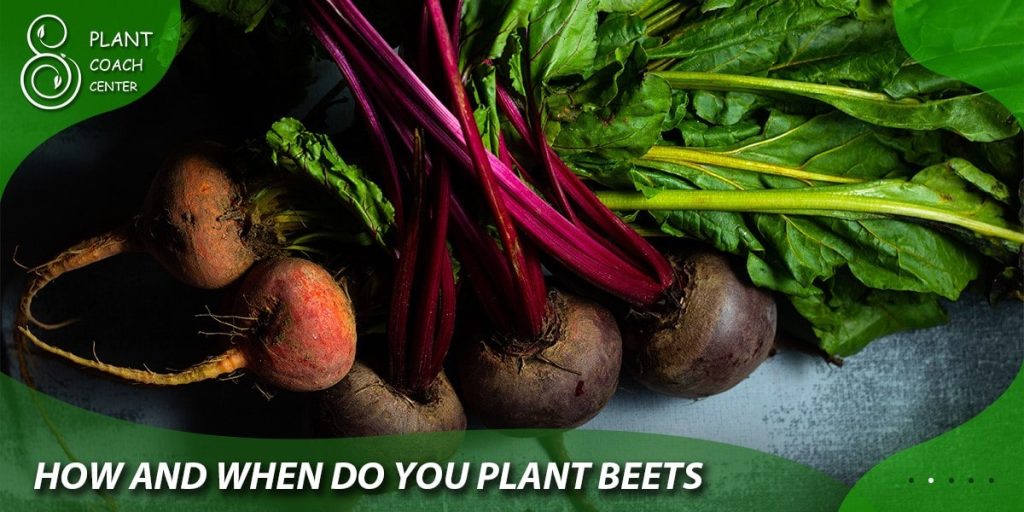
Mastering Temperate Climes: The Goldilocks Zone
Temperate regions offer a sweet spot for beet cultivation, with distinct seasons that provide opportunities for both spring and fall planting. The moderate temperatures of spring and early summer provide a favorable environment for beet germination and growth, while the cool days of autumn enhance the flavors of mature roots. Ample sunlight and well-draining soil are key to thriving beets in these regions.
Conquering Chilly Challenges: Northern Strategies
Northern gardeners face shorter growing seasons and cooler temperatures, requiring adaptable strategies for beet success. Starting beets indoors, several weeks before the last frost date, grants a head start and extends the growing period.
Additionally, selecting beet varieties with shorter maturation times ensures a harvest before frost sets in. Raised beds with well-amended soil help in warming up the soil earlier, offering a conducive environment for beet growth.
Surviving the Arid: Desert Dilemmas and Solutions
Arid climates pose distinct challenges, characterized by scorching heat and scarce water resources. For desert gardeners, opting for a fall planting timeframe is wise, as temperatures begin to moderate. Deep watering is crucial to combat arid conditions, and the use of mulch helps retain soil moisture. Shade cloth can be employed to shield young beets from the intense sun, promoting successful germination.
Sowing the Seeds: Early vs. Late Planting for Beets
In the realm of beet cultivation, timing is everything. The decision to plant your beet seeds early or opt for a later timeframe can significantly influence the outcome of your harvest. Each approach carries its own set of advantages and considerations, allowing you to tailor your planting strategy to your gardening goals and environmental conditions.
Embracing Early Planting: A Leap Ahead
Early planting offers a head start, capitalizing on the cooler temperatures of spring. By sowing your beet seeds as soon as the soil is workable and frost is no longer a concern, you set the stage for vigorous germination and robust growth.
Early-planted beets tend to enjoy milder weather and fewer pest pressures, enabling them to establish strong root systems before the heat of summer arrives. Additionally, the early harvest of tender baby beets is a tantalizing reward for those who choose this path.
Delaying for Distinct Flavors: The Charm of Late Planting
Choosing to plant beets later in the growing season can yield its own unique benefits. The warmth of late spring and early summer accelerates growth, allowing beets to reach maturity more quickly. As the season progresses, the flavors of late-planted beets intensify due to the accumulation of sugars in response to the summer heat.
This approach can be particularly appealing if you’re seeking the robust, earthy sweetness that mature beets deliver. However, late-planted beets may require additional attention to prevent bolting (premature flowering) in response to rising temperatures.
A Balancing Act: Weighing Factors
The decision to plant early or late ultimately hinges on a combination of factors, including your regional climate, available planting space, and desired outcomes. Early planting maximizes the potential for a longer growing season and the enjoyment of baby beets, while late planting accelerates maturation for intensified flavors. Considerations such as frost dates, soil preparation, and ongoing care should also guide your choice.
Soil Secrets: Preparing the Ground for Successful Beet Planting
Beneath the surface, a hidden world of soil composition and quality holds the key to thriving beet cultivation. The journey from seed to vibrant root begins with meticulous soil preparation, where the right techniques and amendments lay the foundation for a successful harvest. Unveiling the secrets of soil, you’ll discover that the health of your beets is intricately linked to the health of the earth they’re grown in.
Understanding Soil Basics: The Canvas of Growth
The first step in preparing your beet bed is understanding your soil’s composition. Beets thrive in well-draining soil with a slightly acidic to neutral pH range (6.0 to 7.0). Conducting a soil test helps identify deficiencies and imbalances, allowing you to tailor amendments to your garden’s needs.
Loosening the Earth: Proper Soil Structure
Creating the right soil structure is crucial for beet root development. Heavy, compacted soil can hinder root growth and cause misshapen roots. To improve soil structure, use a spade or fork to loosen the top 8-12 inches of soil. This encourages root penetration and proper aeration.
Feeding the Earth: Nutrient Enrichment
Amending the soil with organic matter, such as compost or well-rotted manure, provides essential nutrients for healthy beet growth. Organic matter improves soil structure, water retention, and nutrient availability. Adding a balanced fertilizer or one specifically formulated for root crops can further enhance the soil’s nutrient profile.
Draining and Moisture Mastery: Water Management
Beets dislike sitting in waterlogged soil, as it can lead to rot and disease. Adequate drainage is key, and raised beds or slight mounding can help improve drainage in heavy soils. Conversely, maintaining consistent soil moisture is essential for even root development. Applying mulch helps regulate soil temperature and conserves moisture.
Beating Weeds: Weed Prevention and Control
Weeds compete with beets for nutrients, sunlight, and water. Before planting, ensure the area is weed-free. Mulching after planting can help suppress weed growth, reducing the need for frequent and disruptive weeding.
Gentle Earth: Tending to the Soil
Throughout the growing season, caring for your soil is an ongoing commitment. Regularly inspect for signs of nutrient deficiencies, monitor moisture levels, and make necessary adjustments. Applying compost or side-dressing with nitrogen-rich fertilizer during the growing period can keep your soil nourished and your beets flourishing.
Beyond the Frost: Navigating Frost Dates and Beet Planting
As nature’s curtain lifts on the changing seasons, the threat of frost casts a shadow over the world of beet cultivation. Understanding frost dates and employing strategies to protect your beet plants can mean the difference between a thriving harvest and disappointment. Navigating these chilly challenges requires vigilance, preparation, and a touch of creative problem-solving.
Frosty Foes: Understanding Frost Dates
Frost dates mark the average point in the year when the last spring frost occurs and the first fall frost arrives. These dates serve as crucial signposts for gardeners, indicating when it’s safe to plant and when you should start considering protective measures. Beets are hardy cool-season crops, but even they can be susceptible to frost damage if not properly managed.
Early Protection: Starting Indoors
For regions with short growing seasons or late spring frosts, starting beet seeds indoors offers a head start. Planting seeds in trays or pots several weeks before the last frost allows you to nurture young seedlings in a controlled environment. Once the risk of frost has passed, you can transplant these sturdy starts into the garden, saving valuable time in the growing season.
Frost Blankets and Row Covers: Shielding Young Plants
For those who prefer direct seeding in the garden, frost blankets and row covers are invaluable tools. These lightweight fabrics create a protective barrier, shielding tender beet seedlings from the potentially damaging effects of late spring frosts. Remember to secure the covers properly and ensure they don’t touch the plants, allowing for proper airflow.
Cloaks of Warmth: Mulching for Frost Protection
Mulching is a versatile technique that provides multiple benefits, including frost protection. A layer of organic mulch, such as straw or leaves, helps regulate soil temperature, preventing rapid temperature fluctuations that can stress plants. Mulch also acts as a cozy blanket, shielding beet roots from the cold and reducing the likelihood of frost heaving.
Dancing with Fall Frost: Extending the Season
As the gardening year wanes, fall frosts threaten to curtail your beet harvest. However, by monitoring the first expected fall frost date, you can plan ahead and extend your growing season. Late summer planting and the use of protective covers can safeguard your beet crop, allowing you to enjoy fresh beets well into the cooler months.
Conclusion
In the symphony of beet cultivation, mastering the art of timing, adapting to climates, and preparing the soil are the essential notes that compose a successful journey from seed to harvest. Navigating frost dates and embracing indoor innovations further amplify your chances of a thriving beet crop. Whether you’re a seasoned gardener or a budding enthusiast, the secrets shared here will undoubtedly enhance your beet-growing endeavors.
For more expert guidance, tips, and a community of fellow plant enthusiasts, explore the resources available at PlantCouchCenter.com. As you embark on your beet-planting adventure, remember that every decision you make – from the moment you sow the first seed to the day you savor your homegrown beets – plays a role in the harmonious symphony of cultivating these vibrant and nutritious root vegetables.
When should I plant beets?
Early spring or late summer for best results.
Can I start beets indoors?
Yes, it gives them a head start before transplanting.
How do I protect beets from frost?
Use frost blankets or row covers to shield young plants from cold temperatures.


